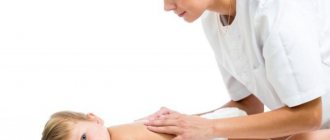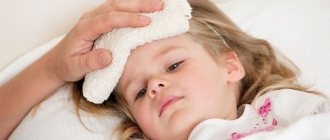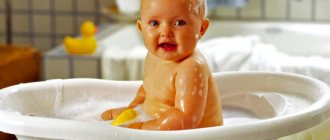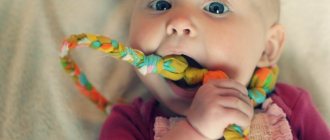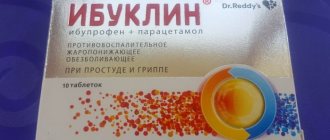Every person has experienced an increase in body temperature at least once in their life. This can happen for various reasons. Most often, the thermometer level rises when the body is damaged by viruses and bacteria. It is worth noting that many pathological microorganisms begin to die when the temperature reaches 38 or 39 degrees. This is how a person fights the disease and gains immunity. Sometimes it happens that the patient has a high temperature, but his hands and feet are cold. What does this mean and how to behave in this situation? You will learn about this from the presented article.
Temperature and cold hands and feet: what does it mean?
Doctors call this condition white fever. All due to the fact that a person’s skin at such a moment becomes very pale. This pattern is explained quite simply.
If a person has a fever and cold hands and feet, this indicates that the blood vessels are spasming. The necessary oxygen collects around vital organs (heart, kidneys, liver, etc.). In this case, there is a strong outflow of blood from the legs and arms.
At this point, a person may experience some weakness, dizziness, chills and other symptoms. The head and forehead remain hot.
Features of body temperature
First, let's look at what temperature is in general. So, two important processes are observed in the human body - the formation of heat and its release. When a child is healthy, these two processes work in balance, resulting in a body temperature of 36.6°C. In the case of an inflammatory process, increased heat generation and heat transfer occurs. Therefore, the first thing doctors try to do is to reduce the formation of heat or increase its output. That is why doctors always recommend providing a sick child with a comfortable environment, quiet games and increased drinking. Dr. Komarovsky is confident that there is no need to be afraid of an elevated thermometer reading, because fever only indicates the child’s body’s ability to adequately fight hostile microorganisms. Heat is the body's strongest defense mechanism. At the same time, in modern medicine, two types of fever are distinguished: 1. Pink, 2. White. With pink fever, the baby's cheeks and ears turn red, and his whole body becomes evenly hot. But if a child has a fever, while his legs and arms remain cold, then parents should remember about white fever, the main indicators of which are cold extremities. This condition of the child is quite dangerous and is the first indicator of the formation of vasospasm. In this condition of the patient, it is not possible to reduce body temperature with conventional medications. But what is more dangerous is that it can provoke the development of seizures. That is why, if a vascular spasm is observed when a child has a fever, the main task facing the parents is to restore normal blood circulation and relieve the spasm. Let us dwell in more detail on how vasospasm can manifest itself and what can cause it.
Does this condition need to be corrected?
If a person has a fever and cold hands and feet, is it necessary to provide him with help? Surely many people know that doctors do not recommend using any antipyretics until the number 39 appears on the thermometer. After all, it is then that the body independently fights the infection and develops immunity. However, this case is an exception. Everyone needs to know about this.
In the absence of timely help, when a person has a fever and cold hands and feet, convulsions may begin. At-risk groups include young children and the elderly. They need to carry out measures to correct this condition already when the thermometer shows 37.5.
Vasospasm at fever in a child Komarovsky video
An increase in body temperature is the most typical manifestation of not only ARVI, but also any infectious disease. The body thus stimulates itself, producing substances that will fight the pathogen.
The main one of these substances is interferon. Many people have heard about it, if only because it is quite often prescribed by doctors in the form of nasal drops. Interferon is a special protein that has the ability to neutralize viruses, and its amount has a direct relationship with body temperature - that is, the higher the temperature, the more interferon. The amount of interferon reaches its maximum on the second or third day after the temperature rises, and that is why most ARVIs end safely on the third day of illness. If there is not enough interferon - the child is weak (cannot respond to an infection with a high temperature), or the parents are “very smart”: they quickly “brought down the temperature” - then there is almost no chance of ending the illness in three days. In this case, all hope lies in antibodies, which will definitely put an end to the viruses, but the duration of the illness will be completely different - about seven days. By the way, the information provided largely explains two facts: it answers the question why “unloved” children get sick for three days, and “favorite” children get sick for a week, and on a scientific level explains the folk wisdom regarding the fact that treated flu goes away in 7 days, and untreated - during the week.
Each child is individual and tolerates fever differently. There are children who calmly continue to play at 39 degrees, but sometimes it is only 37.5 °C, and he almost loses consciousness. Therefore, there cannot be universal recommendations regarding how long you should wait and after what number on the thermometer scale you should start saving.
The main thing for us is the following.
When body temperature rises, everything must be done to ensure that the body has the opportunity to lose heat. Heat is lost in two ways - by evaporation of sweat and by warming the inhaled air.
Two required actions:
1. Drink plenty of fluids - so that you have something to sweat.
2. Cool air in the room (optimally 16-18 degrees).
If these conditions are met, the likelihood that the body itself will not cope with the temperature is very small.
Attention!
When the body comes into contact with cold, skin vessels spasm. It slows down blood flow, reduces sweat formation and heat transfer. The skin temperature decreases, but the temperature of the internal organs increases. And this is extremely dangerous!
You cannot use so-called “physical cooling methods” at home: heating pads with ice, wet cold sheets, cold enemas, etc. In hospitals or after a doctor’s visit, you can, because before (before physical cooling methods) doctors prescribe special medications , which eliminate spasm of skin blood vessels. At home, you need to do everything to prevent spasm of skin blood vessels. That's why
cool air, but warm enough clothes.
Particles of heat are carried away from the body by evaporation of sweat and thus the body temperature decreases. Several methods have been invented to speed up evaporation. For example, place a fan next to a naked child; rub it with alcohol or vinegar (after rubbing, the surface tension of sweat decreases and it evaporates faster).
What to do?
If the temperature is 40 (cold feet and hands), then you should call emergency help. Be sure to tell doctors that a person is experiencing vasospasm. It is possible that medical personnel will not notice this symptom on their own.
If the temperature is 37, cold hands and feet, then you can try to correct this situation yourself. In this case, additional measurements must be taken regularly. Make sure that the thermometer level does not rise too quickly.
With such vascular spasm, conventional antipyretic compounds may be powerless. You need to prepare the so-called lytic mixture. Doctors prefer to administer drugs intramuscularly. This method allows you to quickly bring the patient to his senses. However, you can also use standard medications in the form of capsules and tablets. In this case, it is necessary to calculate the dosage of one or another ingredient. So, the patient has a temperature of 38, cold hands and feet. What should you do in this situation?
How to properly relieve vasospasm during hyperthermia
The first thing to do is to warm up the child’s limbs using all available methods. To do this, you can take rubbing the legs and arms or a warm bath. The temperature of the water in the basin should not be hot, but slightly above room temperature. First, dip one foot in a bowl of water, then dry it with a soft towel and put on a sock. Do the same with the second leg and arms. A cool compress can be applied to the patient's forehead. Provide your baby with plenty of warm fluids and make sure the room temperature does not exceed 20°C.
Important! If a child has white fever, do not give him antipyretic drugs and do not use the wiping method. This may cause seizures!
To restore normal blood circulation, you can give your child 1/2 tablet of No-shpa. Unfortunately, antipyretics alone cannot be used to treat white fever. Cold extremities directly indicate that generalized vascular spasm is occurring in the body. As mentioned above, you should not give your child antipyretic drugs, but use antipyretics only in combination with other medications. Thus, cold feet and hands in a child at a temperature of 38°C and above is a reason to use such potent drugs in combination: • Antipyretic, • Antispasmodic, • Antihistamine. For antipyretic drugs, doctors recommend Paracetamol and Nurofen. The dosage should correspond to the age of the patient. But before use, you must carefully study the instructions and make sure that your baby has no contraindications to the drug. Severe vasospasm is a unique case in which the use of analgin is permitted. Despite all the contraindications and side effects, in this case analgin is considered the only drug that can improve the child’s condition and prevent the development of side effects.
Attention! In case of severe vascular spasms, it is advisable to immediately call an ambulance and carefully monitor the child due to the possibility of developing a spasm.
Source: temperatyra.ru My son and I were in the hospital for a week with ARVI, last Monday we were discharged, and on Tuesday evening my son started vomiting. I decided that we were poisoned with baby kefir. At night, the vomiting intensified and we were taken by ambulance back to the same infectious diseases hospital with a suspected intestinal infection. And then, what we experienced in these five days is something you wouldn’t wish on your enemy! Timochka was on a drip for two days, 16 hours each; for several days he had a very high temperature, but nothing could bring him down. we were injected at a strong angle. My son’s legs and arms became cold, began to turn blue, and his eyes began to roll back in his head! God, that was the scariest moment of my life! Half the squad came running to my screams! They injected my son with another nosh-pu and began to massage and warm his legs and arms. It turned out that our high temperature caused a spasm of blood vessels and that’s why the temperature was so bad. And only in the morning our temperature became normal and from that moment we began to recover! The information may be useful to someone, the doctor said (although of course God forbid). So, when at a high temperature a child has cold legs and arms, and he himself is on fire. you need to give him 1/4 of the nosh-pa (in our case, half a tablet is possible), undress him, put warm socks on his feet, warm his feet and hands, and after 20 minutes give him an antipyretic, preferably Nurofen. because while the child has vasospasm, the antipyretic will not work. Do not wipe the child and do not give paracetamol-based drugs, because it contains substances that constrict blood vessels; from them, the temperature will drop only a few degrees, but then it will rise even more. And I was a fool wondering why Tsifikon hadn’t lowered our temperature in any way before. Now I’ll be smarter and as soon as the temperature rises a little to 38, I’ll immediately give an antipyretic. although doctors shout with one voice that it is better not to lower children’s temperature to 38.5. No, I won’t fall for this talk anymore! We've had enough! Now I know that temperature above 38.5 is very difficult for us! Now, ttt, everything is fine, we are at home, sleeping in our crib! True, we don’t leave mom’s side, we don’t even stay with dad, he immediately starts crying. but I think it’s due to stress, I hope that my son will soon forget the nightmare he experienced! But I definitely won’t forget it soon! Source: deti.mail.ru
First step: relieve the spasm
First you need to take medications that relax smooth muscles. The most commonly used tablets are “No Shpa” or “Drotaverine”. You can also insert one Papaverine suppository into the anus. It has a similar effect.
If you do not have such medicines on hand, then you need to warm your limbs yourself and increase blood flow in them. To do this, put warm socks on the patient and rub the feet. Some people use a variety of warming ointments. However, doctors strongly do not recommend doing this.
Step Two: Use an Antihistamine
If a person has a temperature of 39, cold hands and feet, and also chills, then after using antispasmodics you need to take antiallergic drugs. These include Zodak, Zirtek, Suprastin and many others.
These medications will enhance the effect of antispasmodics and prevent the development of an allergic reaction. This is very important when it comes to treating young children. Many children are prone to undesirable reactions to antispasmodics and antipyretics.
Use of lytic mixture
If you have the opportunity to administer drugs intramuscularly, then you should use this method. It will quickly bring the patient to a normal state and prevent seizures.
To prepare the lytic mixture, you will need the same drugs: antispasmodics, antihistamines and antipyretic compounds. Most often, doctors use the drugs “No Shpa”, “Diphenhydramine” and “Analgin”. All these compositions are taken in equal proportions in the amount of one milliliter. Medicines must be mixed in one syringe. After this, inject the mixture into the gluteal or thigh muscle. Within a few minutes you will notice an improvement. The patient's legs and arms will become warmer, and the temperature will begin to gradually decrease.
High temperature and cold extremities: common mistakes
Many people do not know the basic rules that must be followed during white fever. Wanting to help, loved ones only worsen the patient’s condition. What do you need to remember when lowering the temperature under such circumstances?
- Never use alcohol solutions for wiping. With a normal increase in temperature, this method is effective. However, this case is an exception to the rule. Liquid evaporating from the body will only intensify vascular spasm.
- Do not try to take a double dose of an antipyretic without using antispasmodics. In this case, you will only get an overdose of a certain drug, which will make you feel even worse. Most antipyretic drugs for vasospasm are powerless.
- Do not try to undress the patient and cool him (for example, sit him in a cool bath). This will lead to increased spasm and convulsions.
- Give the patient more fluids. Ideally, these will be warm cranberry fruit drinks and herbal decoctions.
- If the body temperature does not drop within one hour after all the measures taken, and the limbs do not want to become warm, then you should call an ambulance. If convulsions and loss of consciousness occur, you should not hesitate for a single minute.
- If similar events occur again, do not let the situation worsen. Start reducing the temperature using the methods described above already when the mark on the thermometer reaches 37.5 degrees.
Follow all the rules for reducing your temperature during white fever and be healthy!
Causes of vasospasm
When your baby has a fever, his body should be warm, pink and a little damp. Such symptoms indicate that in a sick body a balance is maintained between heat generation and heat transfer. In other words, the baby’s body releases the same amount of heat as it produces it. In this case, there is a slight deterioration in the child’s condition and if the body temperature does not exceed 38.5°C, then parents have every opportunity to help the child cope with this symptom on their own. A more complex course of the disease is when the body temperature rises, but the extremities remain cold. They are accompanied by pallor of the skin and chills, which indicates vasospasm. The patient's condition noticeably worsens, weakness and apathy appear. Such symptoms are primarily provoked by a lack of fluid in the body, as a result of which the blood thickens and blood circulation slows down. The second, important provocateur of this condition is considered to be impaired functioning of the central nervous system and low blood pressure.



